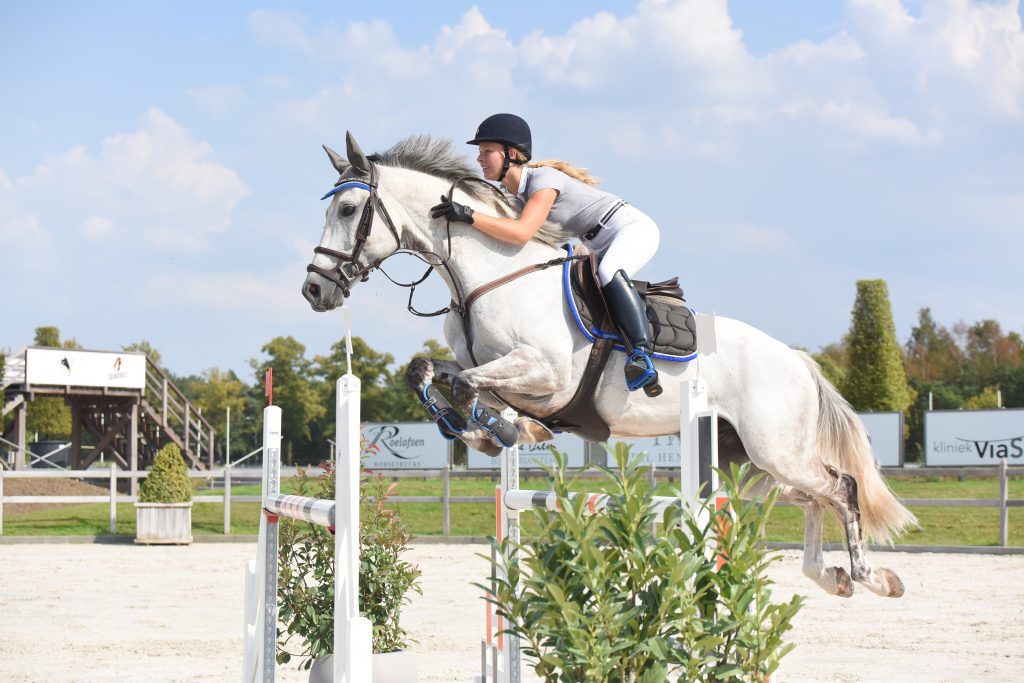Gaining knowledge on the technique of the movement of a horse is a fundamental part of the research we perform at EquInnoLab.
Our showjumping analysis project aims to give insight on the technique of the jump of a horse-rider combination. The essential goal is for us to be able to objectively measure the performance of a jump and to give advice on the trainable aspects of the jump. We will do this through desk-research on jumping techniques combined with a field study where we will perform several motion analyses using the EquInnoLab. MOTION system. This will be supported by experiences of top showjumpers and coaches. The goal is to make an objective analysis of the jump which we can use to indicate performance strengths and weaknesses that helps us give tailored training advice.
A jump consists of several phases, such as the approach, takeoff, flight, landing, and getaway. Therefore, we will also consider the technique and physique that is required of both horse and rider in each of these phases. This can be for example the required speed at approach or the horse’s leg placement at takeoff. Additionally, there are different types of jumps such as tall verticals (high jump) and wide oxers (long jump), as well as different combinations of jumps such as doubles and triples. All of these factors will be taken into account when we conduct our research. The findings from this project will contribute to the optimisation of our training support services so that we can assist riders and horses in the best way possible.



